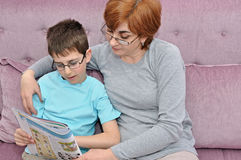Warning Signs
Dyslexia is the most common reason a bright child will struggle with spelling, writing, or reading. But it affects many other areas as well. Children with dyslexia also have difficulty:
- Memorizing their address, the alphabet,
or their multiplication tables - Learning to tie their shoes
- Writing some letters or numbers backwards past the end of first grade
- Learning to tell time on a clock with hands
- Telling left from right.
- Confusing letter pairs such as b-d, b-p, p-q, or g-j.
- Saying sounds in the right order in multi-syllable words such as animal, spaghetti, hamburger, consonant.

For a complete list of dyslexia warning signs, click here.
Most people with dyslexia also have dysgraphia – very odd handwriting:
- their letters don’t sit on the line,
- there may be odd spacing between their words,
- tall letters are sometimes written as short ones,
- tails don’t always hang below the line,
- sentences often don’t start with capital letters, and
- punctuation is often left out.
For a complete list of dyslexia warning signs, click here.
Dyslexia: Symptoms & Solutions
Watch this video
More Videos on Dyslexia
To watch more videos on dyslexia, click here.
Myth vs. Fact

Sadly, most children with dyslexia are never identified – in part, due to persistent myths about dyslexia, including:
MYTH:
He can’t have dyslexia because he can read.
Instead, they use alternative strategies: context clues (pictures and a predictable or familiar story), the shapes of words, and guessing based on the first letter or two.
But their memories can hold only a limited number of words. So these strategies will fail them by third or fourth grade. Without the right type of help, they can not progress any further—no matter how smart they are and how hard they try.
Such reading failure is preventable – if they are taught to read differently – using the Barton Reading & Spelling System. It teaches children and adults with dyslexia to read and spell at the mid-ninth grade level.
That’s considered adult reading level in our society. A ninth-grade-level reader can pass the GED, and go to college.
MYTH:
Dyslexia means you see things backwards.
Research has proven that people with dyslexia do NOT see things backwards.
MYTH:
Dyslexia is rare.
That’s one out of every five children.
Dyslexia can range from mild to severe.
Dyslexia can come by itself or with Attention Deficit Disorder.
In fact, if you know someone with ADD/ADHD who also has difficulty with spelling, writing, or memorizing multiplication tables, that person may also have dyslexia.
MYTH:
He can read okay. He just can’t spell. That’s not dyslexia, is it?
But intelligent children with mild-to-moderate dyslexia can fool you during the first few years in school. They can read. You just don’t know HOW they are reading. But their unusual reading strategies will force them into a brick wall by third to fourth grade.
Their awful spelling, however, is obvious very early. If they spend hours each night working on a spelling list, they may be able to pass the test. But they won’t be able to spell those very same words when they’re writing sentences or compositions.
Poor spelling is highly related to poor reading, and poor spelling shows up first. But it may take until third to fourth grade for the reading struggles to become equally obvious.
Reading and spelling are closely related skills.
MYTH:
She can’t have dyslexia. The school tested her,
and she didn’t qualify for special education.
Only the most severely dyslexic children meet the criteria for a Learning Disability, or LD, and get help through the Special Education system.
According to NIH research, 80 percent of children with a Learning Disability actually have dyslexia. Dyslexia is by far the most common learning disability.
But only one in ten children with dyslexia qualifies for special education services.
Dyslexic children who do NOT qualify just “fall through the cracks.” They’re in the regular classroom, struggling far more than they should, and they’re at extremely high risk for dropping out of school later.
MYTH:
There’s no such thing as dyslexia. That is just a fancy term which means a child can’t read.
But thanks to over 35 years of research by the National Institutes of Child Health and Development (NICHD), a branch of the National Institutes of Health, we now have a research-based definition of dyslexia.
Click here to read that definition.
MYTH:
It can’t be dyslexia. I had my child tested outside
of the school system. They said it was: (pick one)
- Auditory Discrimination Problem
- Auditory Processing Disorder
- Central Auditory Processing Disorder (CAPD)
- Orthographic Deficit
- Difficulty remembering spelling patterns
- Dysgraphia
- Dysnomia
- Dysphonetic Deficit
- Phonemic Awareness Deficit
- Reading Disability (RD)
- Reading Fluency Problem
- Short-term or Long-term Memory Deficit
- Specific Language Disability (SLD)
- Visual Processing Disorder
- Visual-Motor Integration Disorder
- Visual Memory Deficit
- Visual Tracking Problem
- Visual Convergence Problem
- Vocabulary on Demand Problem
- Word Retrieval Deficit
- Written Language Disorder
Dyslexia affects many different areas, but some testers only check one area. They find one weakness and come to the wrong conclusion. They don’t realize that weakness may be part of a bigger problem: dyslexia.
It’s like the fable of the blind men who approach an elephant from various directions. The one who discovers the trunk describes the animal very differently than the one who finds the tail, than the one who finds the leg, the tusk, etc.
None of them “see” that what they found is just one part of a bigger thing, an elephant.
To watch Susan Barton’s webinar called Myths About Dyslexia, click here.
To learn more about dyslexia:
Visit the Bright Solutions for Dyslexia website.
To receive a FREE Monthly E-newsletter on Dyslexia, click here.






